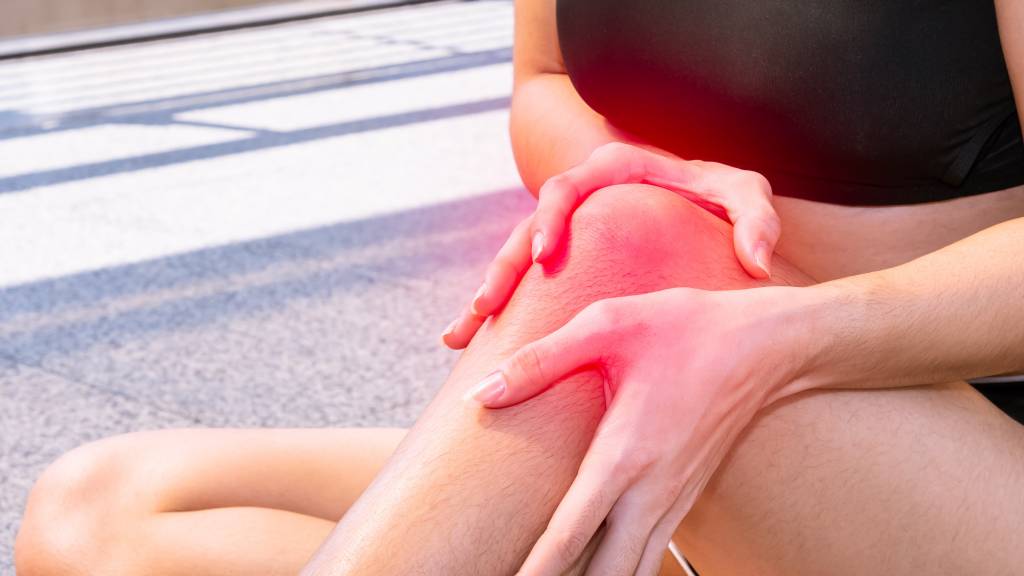The Knee: Anatomy, Sprains, and Treatments
The Knee: Anatomy, Sprains and Treatment Options
The knee joint is one of the most complex and essential in the human body. Its unique anatomical structure allows for a wide range of motion but also makes it vulnerable to various injuries, particularly sprains. This article explores the anatomy of the knee, the causes and symptoms of sprains, and the available treatment strategies.
How the Knee Works
The knee is a synovial joint that connects the thigh to the lower leg. Its primary function is to allow leg movement while supporting body weight. The knee operates through a precise coordination of bones, ligaments, muscles and cartilage.
The main bones that make up the knee joint include:
-
Femur: the thighbone
-
Tibia: the shinbone
-
Fibula: a thinner bone running alongside the tibia
-
Patella: the kneecap, located at the front of the knee
These bones are held together by a network of strong ligaments:
-
Anterior Cruciate Ligament (ACL) and Posterior Cruciate Ligament (PCL): provide front-to-back stability
-
Medial Collateral Ligament (MCL) and Lateral Collateral Ligament (LCL): ensure lateral stability
Surrounding muscles and tendons, such as the quadriceps and hamstrings, provide the force needed for movement. Articular cartilage and the menisci act as shock absorbers, reducing friction and evenly distributing weight.
Sprains of the Knee: Causes and Symptoms
One of the most common knee injuries is a sprain, which occurs when one or more ligaments are stretched or torn beyond their normal range. Sprains can range from mild to severe depending on the extent of ligament damage.
Common causes of knee sprains include:
-
Direct physical trauma
-
Sudden or forceful movements
-
Excessive rotation of the knee
-
High-impact sports
-
Inadequate training or lack of warm-up
Symptoms of a knee sprain may include:
-
Pain, ranging from mild to severe
-
Swelling around the joint
-
Limited range of motion
-
Feeling of instability
-
Clicking or popping sounds during movement
Therapeutic Benefits and Expected Outcomes
Timely and appropriate treatment of knee sprains is essential to prevent long-term complications and restore joint function. The main goals of treatment include:
-
Reducing pain and inflammation
-
Restoring joint stability
-
Regaining full range of motion
-
Preventing future injuries
With the right approach, most mild to moderate sprains heal completely within two to four weeks. More severe injuries may require longer recovery periods and, in some cases, surgical intervention.
Practical Guidelines for Treatment
Knee sprains are usually managed conservatively through the PRICE protocol:
-
Protection: stabilizing the joint with braces or supports to avoid further damage
-
Rest: limiting physical activity to allow healing
-
Ice: applying cold packs to reduce swelling
-
Compression: using elastic supports to promote fluid drainage
-
Elevation: keeping the leg raised to minimize fluid buildup
In addition to PRICE, treatment may include:
-
Use of braces or crutches to reduce pressure and aid gradual return to walking
-
Non-steroidal anti-inflammatory drugs (NSAIDs) to control pain and swelling
-
Physical therapy to restore strength and flexibility
-
Surgery in severe cases to repair or reconstruct damaged ligaments
Treatment should always be tailored to the severity of the injury and the patient’s specific condition, under the guidance of an orthopedic specialist.
Preventing Knee Sprains
Prevention plays a key role in maintaining knee health. Effective strategies to reduce the risk of sprains include:
-
Performing proper warm-up routines before physical activity
-
Maintaining good muscular flexibility through regular stretching
-
Strengthening the muscles that support the knee, particularly quadriceps and hamstrings
-
Using proper techniques during sports and exercise
-
Wearing suitable footwear and using support devices when needed
-
Avoiding abrupt or sudden movements that place excess stress on the joint
After an injury, using a knee brace can also help improve stability and proprioception to prevent re-injury.
Conclusion and Recommendations
The knee is a complex joint essential for human mobility. Understanding how it works is key to preventing and managing sprains and other injuries. While many minor sprains can be treated successfully at home with the PRICE protocol, it is always advisable to consult an orthopedic specialist if pain persists, swelling is significant, or instability is present.
An orthopedic specialist can provide an accurate diagnosis, rule out more serious damage, and develop a customized treatment plan. They can also offer guidance on how to prevent future injuries and maintain long-term knee health.
For more information, visit us at our orthopedics clinic in Via Taramelli 21/23, Bergamo or contact us today.
? We are available at 035 212110 from Monday to Saturday, 9 am to 12:30 pm and 3 pm to 7 pm
? Or email us at: info@ortopediazambelli.it


